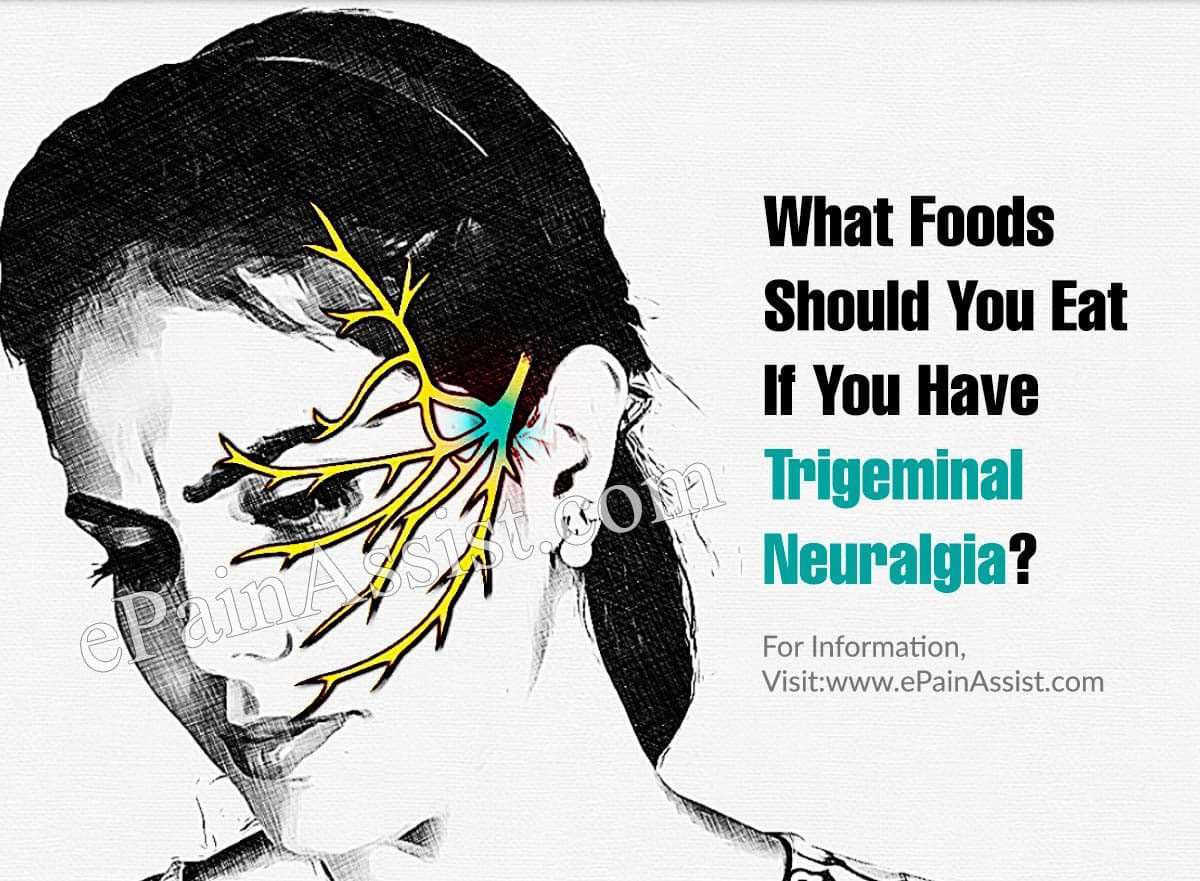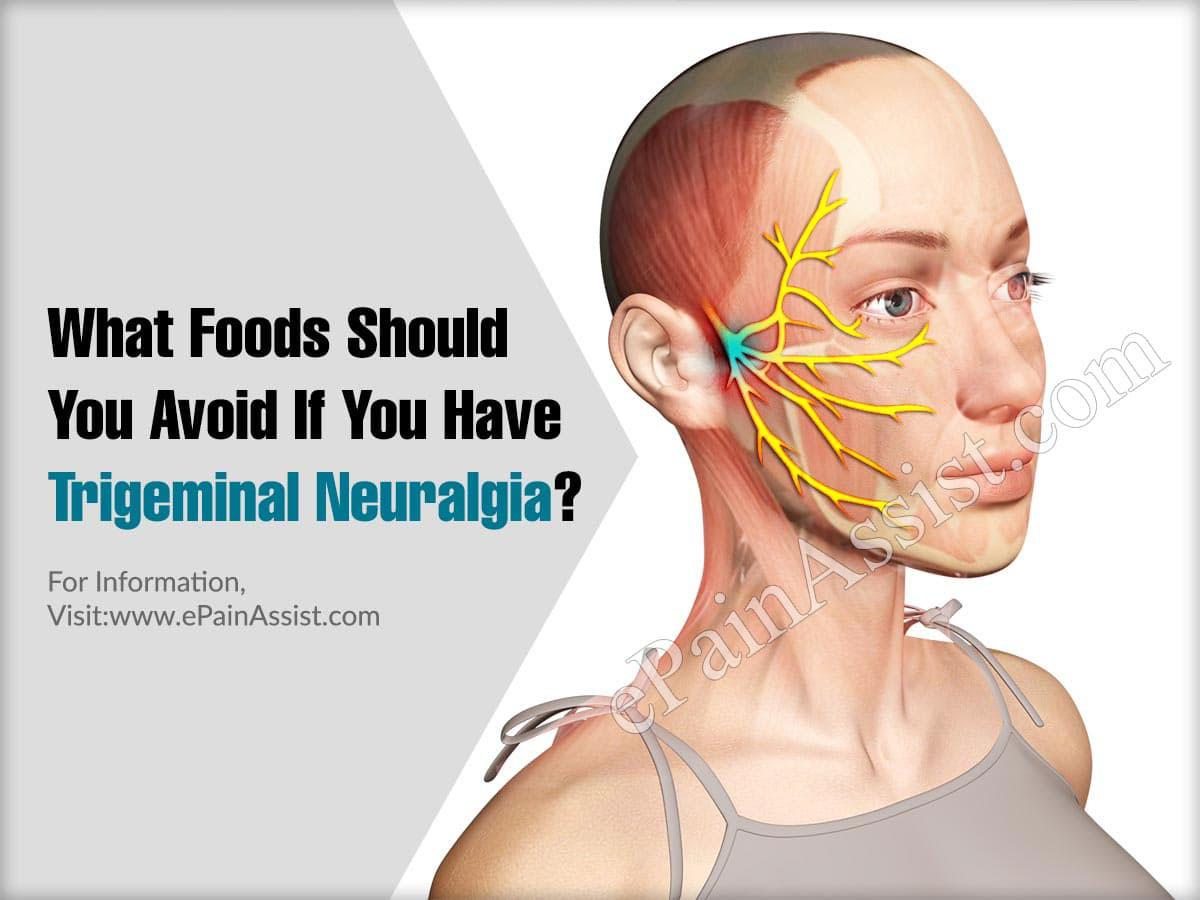Apart from the medications prescribed for the management of trigeminal neuralgia, the patient should take care of the triggers that may lead to trigeminal neuralgia attack. Food is one of the triggers for this condition. Thus incorporating healthy food habits may avoid the attack as well as helps to improve the condition.

What Foods Should You Eat If You Have Trigeminal Neuralgia?
Low Saturated Fat Diet: Intake of low saturated fat diets helps to repair the damage of to the tissues caused by the attack. Examples include vegetables, dried fruits, whole grain, low-fat dairy products, etc.
Fish Oil: Omega-3 fatty acids are present in Fish oil. Omega-3 fatty acids, especially EPA and DHA helps reduce pain intensity and also repairs the damaged nerve.
Vitamin B Complex Containing Foods: Vitamin B complex controls the neuropathic pain occurring during the pain attacks. The vitamin B complex nourishes the nerve and boosts their immunity. Foods rich in Vitamin B complex are seafood, beans vegetables, fruits and a little quantity of lean poultry including chicken, etc.
Poultry And Nuts: Poultry products and nuts are low saturated products that help to repair the nerve injury and thus helps in alleviating pain and maintaining remission.
Antioxidants: Antioxidants manages the inflammation that is caused in the trigeminal verve due to blood vessel compression. Foods that are rich in antioxidants are brown rice, cherries, cranberries, pears and prunes, and cooked vegetables including asparagus, broccoli, lettuce, beans, collards, artichokes, sweet potatoes, spinach, and squash. Antioxidants also reduce oxidative stress that helps in reducing the damage to tissues.
Vitamin-C rich foods: Vitamin C is a water-soluble antioxidant that boosts the immunity of patients and also helps in reducing the intensity of pain. Vitamin C rush foods are grapefruits, orange, lemon, lime, and Amla.
Keep Hydrated: Dehydration is regarded as the trigger for trigeminal neuralgia. Thus patient should drink more water and remain hydrated.
Take A Limited Amount Of Lean Meats: Lean meats helps in decreasing the nerve pain and improves the function of immune system3.

What Foods Should You Avoid If You Have Trigeminal Neuralgia?
Salsa, Chili, And Hot Sauce: These foods should be avoided as they cause a burning sensation and may also trigger the attack of trigeminal neuralgia.
Mint: Mint cause sensation of cold on the face and facial areas.
Spicy Foods: Spicy foods activate the signals of nerve pain in the trigeminal neuralgia.
Steamy Foods: Steamy foods are the primary zone of trigger that may cause pain.
Caffeine: Caffeinated products should be avoided as it increases the risk of neuropathic pain.
Avoid Sweeteners: Avoid aspartame and artificial sweeteners as these substances increase nerve pain.
Fatty Foods: Avoiding fatty foods may provide relief to some patients suffering from trigeminal neuralgia4.
Symptoms Of Trigeminal Neuralgia
Attack And Remission Period: The main symptom of trigeminal neuralgia is a sudden attack on the face with sharp shooting pain. This pain lasts for a few seconds to two minutes. Attack of trigeminal neuralgia may occur within a few days, months or years. But in some cases that attack is more frequent and there is no remission period. The frequency of attack increases as the condition progresses. With the progression of the disease, the severity of pain also increases. The pain attacks cause only one side of the face at a time, in the rare chance that causes in both sides of the face1.
Pain On The Face: The pain caused by trigeminal neuralgia may feel like an electric shock on the face. The attack of this condition affects cheek, lips, teeth, gums, jaw, area surrounding the eye and forehead as these regions are supplied with trigeminal nerve2.
Burning And Aching: Before trigeminal neuralgia attacks, the patient feels burning and constant aching.
Conclusion
Some foods are to be taken in trigeminal neuralgia to improve the symptoms while some foods should be avoided to prevent the trigger. Foods that can be taken include antioxidant-rich foods, Vitamin C rich foods, and fish oil while saturated fatty acids and caffeine should be avoided.
- https://www.healthline.com/health/trigeminal-neuralgia#symptoms
- https://www.mayoclinic.org/diseases-conditions/trigeminal-neuralgia/symptoms-causes/syc-20353344
- https://fpa-support.org/tip-sheet-neuropathic-face-pain-and-trigeminal-neuralgia-3/
- https://fpa-support.org/pain-triggering-and-pain-safe-foods/
Also Read:
